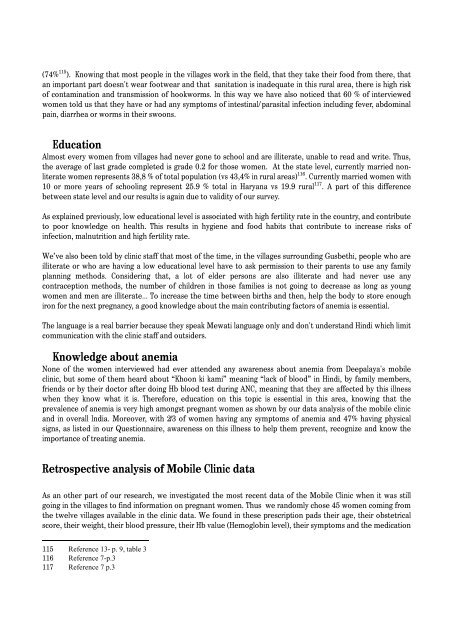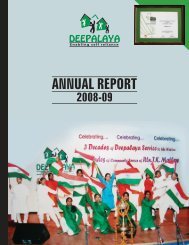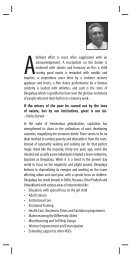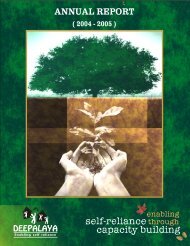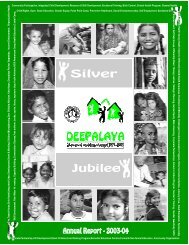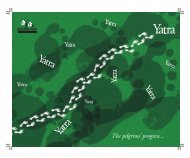Report 2011 - Deepalaya
Report 2011 - Deepalaya
Report 2011 - Deepalaya
Create successful ePaper yourself
Turn your PDF publications into a flip-book with our unique Google optimized e-Paper software.
(74% 115 ). Knowing that most people in the villages work in the field, that they take their food from there, that<br />
an important part doesn't wear footwear and that sanitation is inadequate in this rural area, there is high risk<br />
of contamination and transmission of hookworms. In this way we have also noticed that 60 % of interviewed<br />
women told us that they have or had any symptoms of intestinal/parasital infection including fever, abdominal<br />
pain, diarrhea or worms in their swoons.<br />
Education<br />
Almost every women from villages had never gone to school and are illiterate, unable to read and write. Thus,<br />
the average of last grade completed is grade 0.2 for those women. At the state level, currently married nonliterate<br />
women represents 38,8 % of total population (vs 43,4% in rural areas) 116 . Currently married women with<br />
10 or more years of schooling represent 25.9 % total in Haryana vs 19.9 rural 117 . A part of this difference<br />
between state level and our results is again due to validity of our survey.<br />
As explained previously, low educational level is associated with high fertility rate in the country, and contribute<br />
to poor knowledge on health. This results in hygiene and food habits that contribute to increase risks of<br />
infection, malnutrition and high fertility rate.<br />
We’ve also been told by clinic staff that most of the time, in the villages surrounding Gusbethi, people who are<br />
illiterate or who are having a low educational level have to ask permission to their parents to use any family<br />
planning methods. Considering that, a lot of elder persons are also illiterate and had never use any<br />
contraception methods, the number of children in those families is not going to decrease as long as young<br />
women and men are illiterate… To increase the time between births and then, help the body to store enough<br />
iron for the next pregnancy, a good knowledge about the main contributing factors of anemia is essential.<br />
The language is a real barrier because they speak Mewati language only and don't understand Hindi which limit<br />
communication with the clinic staff and outsiders.<br />
Knowledge about anemia<br />
None of the women interviewed had ever attended any awareness about anemia from <strong>Deepalaya</strong>'s mobile<br />
clinic, but some of them heard about “Khoon ki kami” meaning “lack of blood” in Hindi, by family members,<br />
friends or by their doctor after doing Hb blood test during ANC, meaning that they are affected by this illness<br />
when they know what it is. Therefore, education on this topic is essential in this area, knowing that the<br />
prevalence of anemia is very high amongst pregnant women as shown by our data analysis of the mobile clinic<br />
and in overall India. Moreover, with 2/3 of women having any symptoms of anemia and 47% having physical<br />
signs, as listed in our Questionnaire, awareness on this illness to help them prevent, recognize and know the<br />
importance of treating anemia.<br />
Retrospective analysis of Mobile Clinic data<br />
As an other part of our research, we investigated the most recent data of the Mobile Clinic when it was still<br />
going in the villages to find information on pregnant women. Thus we randomly chose 45 women coming from<br />
the twelve villages available in the clinic data. We found in these prescription pads their age, their obstetrical<br />
score, their weight, their blood pressure, their Hb value (Hemoglobin level), their symptoms and the medication<br />
115 R e f e r e n c e 1 3 - p . 9 , t a b l e 3<br />
116 Reference 7 -p.3<br />
117 R e f e r e n c e 7 p .3


